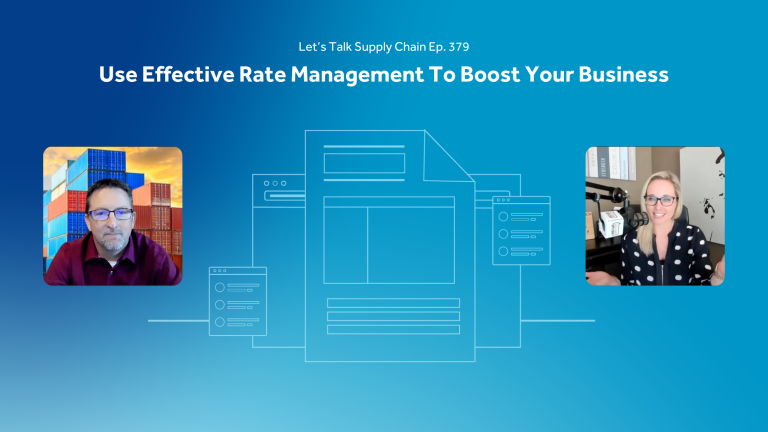If you’re in the trucking industry, controlling cash flow is likely one of your biggest challenges.
While maintaining a positive cash flow is always going to be an issue in every business, trucking is especially tricky because all of your costs are paid upfront. Investing in equipment, operating authorities, insurance, driver retention, fuel and maintenance costs requires enough cash flow to manage both your capital budgeting decisions and your day-to-day numbers fluidly.
That means that, no matter what the load, you’re likely to be handing over a lot of money, even before you move one mile down the road. This doesn’t even include the typical payback time required to collect what your business is owed from your clients on a regular basis.
What can you do to take control back, and get the most out of your money flow in trucking and freight brokerage? Let’s talk about the options available to your business right now.
Vet Your Clients
Start with something easy. If you set up your critical expectations for payments clearly from the start of your business relationships, it will be easier to have difficult conversations (if you need to have them at all) down the line.
Begin with conducting credit checks on all of your new clients as a matter of course, including gathering trade and bank references. Check them out with other vendors, and ask how they pay their bills – and if they do so in a timely manner. Make sure that you keep notes on your clients, including your vetting information. Use a TMS that allows you to easily see these notes; one that allows you to easily run reports on each individual client in case of future challenges.
Asking for references shouldn’t cause your new clients any concern – if they’re legitimately interested in building a relationship with you. A bit of work on the front end may well save you from working for a client that is slow-paying – or worse, one that regularly doesn’t pay.
State Your Terms
Another simple fix is to make sure your payment terms are clearly stated on both the credit application you provide to clients, as well as on your rate advisories and invoices. Always send a rate advisory to the client before moving a load. Your payment terms on all of these documents create a legal standard to which the client agrees when they order services from you. This will help to cover your interests if you have to seek advice from a lawyer to recover your invoice payments.
Work Your Receivables
Your invoice starts depreciating the day you send it off to the client. That means that sitting on your receivables can be hazardous to the financial well-being of your company. Start the process before the invoice is due. If you have a Net 30 invoice in play, send a friendly reminder email a week before. The day it’s due, get on the phone.
Work your receivables weekly, and make notes on the client record so you know the promises made.
Run AR Reports Weekly
Running an AR report to track your receivables on a weekly basis can help you keep track of your clients’ payment schedules, and each of your clients’ tendencies to pay earlier or later. Knowing this information means that you can stop accepting loads from a client who pays in unacceptable terms.
Set Credit Limits and Adhere to These Limits
Limit your exposure to risk. Transportation Management Software systems can restrict your dispatcher from creating loads for a client that has reached their credit limit. Remember, dispatchers most often don’t care about how much money a client owes, because their job is to keep loads on the move. Use software to your advantage and set credit limits so that a dispatcher cannot unwittingly expose your business to more risk than you are willing to accept.
Manage your PODs
Most clients will require a Proof of Delivery before accepting the invoice for the movement of their freight, but waiting on drivers to get PODs back to the home terminal can cause a serious delay in the invoicing process. Few trucking companies or freight brokerages are in a position to keep financing their clients, and pay the interest on the cost each of these loads.
So, let’s sum up:
- You have to plan ahead to formalize your cash-flow goals.
- It pays to create objectives for evaluating cash-flow at each level of responsibility: in planning, in monitoring invoices, in choosing clients, in dispatching, and in each truck on the road.
- It’s important to lock in an early warning system for potential problems in cash-flow measurements by using a TMS. With early warning, you have time to make changes before things get out of hand.
- Take time to build greater awareness of your company’s overall operations and the impact of cash-flow at every level in the company, and motivate personnel throughout the organization to meet these planned cash-flow objectives.
Cash Flow Management All the Way Home
A quicker cash flow process not only makes things easier for you and your team, it means that you’ll be better equipped to bring in the cash when you need it. From moving PODs quickly, to invoicing your client, to processing your data with your accounting systems and the TMS database on the back-end, a system like this means that everything works more effectively. Quicker invoices sent out to clients means less time spent by your staff chasing and scanning paperwork, and more money in your bank account.
Editor’s note: This blog was originally written for Tailwind Transportation Software, Cash Flow Management.




